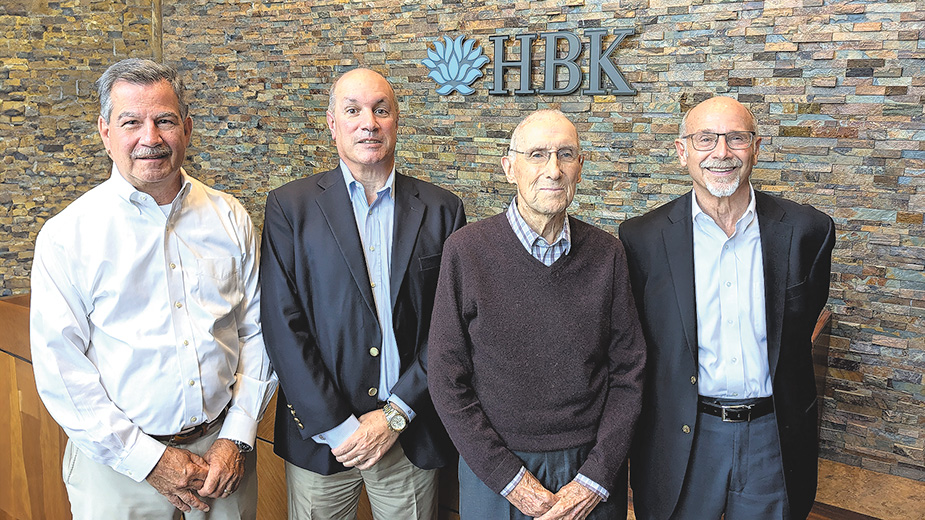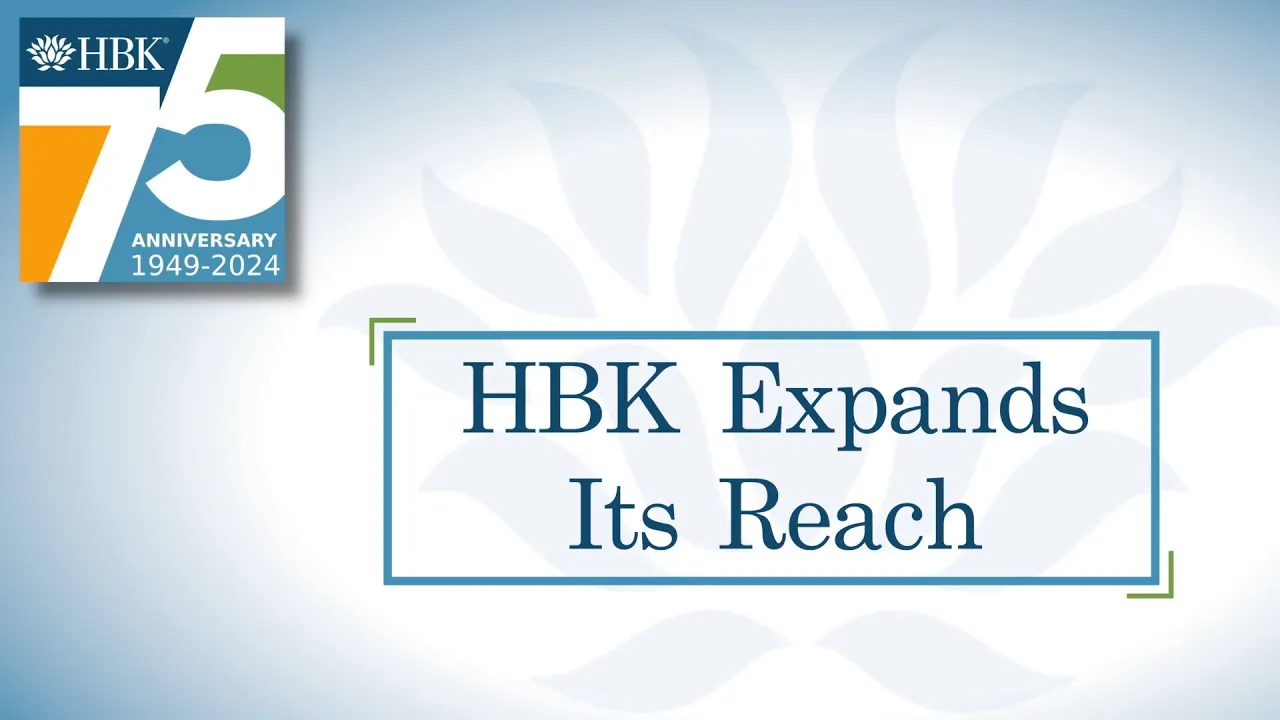Keys to Growth of HBK: Leadership and Planning
YOUNGSTOWN, Ohio – As a young man just out of college, Jim Dascenzo’s options were wide open. Armed with a degree in accounting from Youngstown State University, Dascenzo recalls he had his pick of joining major firms such as Ernst & Whinney and Deloitte.
“I think I had 12 offers,” he recalls. “When I came out of YSU in the late ’80s, the economy was booming and there were tons of jobs.”
Uneasy about committing to a major firm in Cleveland or Columbus and wishing to remain in the Mahoning Valley, Dascenzo approached a family member for advice – his uncle, Anthony Giampetro, then a CPA. After Dascenzo described his situation and his prospects, his uncle imparted a dose of wisdom:
“He said, ‘You’ve got to go with Hill, Barth and King,’” Dascenzo remembers his uncle advising. “They’re the best. You’ll get the best training. You’ll learn the most. And you’ll make a career out of it.”
So, Dascenzo took a job at the firm, then based in Boardman, in January 1988. “I was lucky,” Dascenzo says. Today he is a Principal and National Director of HBK Manufacturing Solutions in the firm now known as HBK CPAs & Consultants. “I was in a position where I could grow and succeed.”
ORIGINS AND COMPANY GROWTH
This growth, Dascenzo says, is attributed to the firm’s dedication to adapting to the needs of business and recruiting young, innovative talent to propel the future of the firm.
“The way our predecessors set this firm up is really unique in this industry,” he says. “We have to develop these young people to continue that growth. That’s what’s allowed us to be around for 75 years.”
In that time, HBK has grown from a handful of accountants huddled in an office in downtown Youngstown to the 46th largest accounting and business consulting company in the United States – with the heart of its operations still headquartered in the Mahoning Valley.
In 1947, HBK cofounder Wally King – then a young student taking accounting courses at what was Youngstown College – joined CPA Rowland Hill’s small office on the 13th floor of the Realty Building in Youngstown. The following year, tax specialist Irl Hammonds joined the firm as a tax specialist. In 1949, they renamed the company Hill & Hammonds, the forerunner of HBK.
From the beginning, the firm grasped the importance of innovation, recalls King, now 101 years old. Hammonds, for example, brought with him “last in, first out” – or LIFO – inventory valuation. “We were told he developed the concept of dollar-value LIFO,” he says. It was Hammonds, King understands, who was instrumental in obtaining approval from the Internal Revenue Service to adopt this as an accepted practice of placing valuation on company inventories.
The idea behind LIFO is that the last inventory shipped into a company is the first sold, while the earlier inventory is sold last. While the products sell at the same price, the earlier inventory sold is valued less for tax purposes, creating benefits for the client, especially during an economic expansion and a declining dollar, King says. That helped the firm to land larger clients, such as the former Standard Slag Corp.
In 1954, after the death of Hammonds, tax specialist Bill Barth joined the firm and the firm’s name changed to Hill, Barth & King. In the 1950s and ’60s, the firm expanded as clients such as the Edward J. DeBartolo Corp. also grew in stature.
“My first job was working on the DeBartolo Corp. audit,” recalls Phil Carlon, who joined HBK in 1980 as a staff accountant and is today a Principal. By that time, the company had grown to six offices, 11 partners, 75 employees and relocated its headquarters to Boardman. “I think our revenue was only about $3 million or something,” he says. Today, the firm’s revenue exceeds $150 million annually. It boasts approximately 700 employees and has 17 offices in five states and Delhi, India. “I’m just amazed at the growth that we’ve had and the resources we’ve brought to share with our clients,” he says. “That’s just been an amazing journey.”
Carlon arrived at HBK as an important transition was underway. Then, per company policy, principals had to retire at age 60 – it’s since been changed to 62 – and leave the firm, allowing younger employees such as Carlon and others to advance. King, who turned 60 in October of 1983, retired at the close of fiscal 1984. By the following year, HBK had added offices in Naples and Stuart, Fla.
NEW RECRUITS, GOVERNANCE AND EXPANSION
As the firm grew, HBK continued to recruit specialists from larger national firms, a decision that proved integral to the continued success of the company.
Such was the case with HBK Principal Jim Rosa, who in 1986 left an international CPA firm in Toledo to join the company as part of its tax group. The company was also making the leap toward adopting new technology as the world entered the computer age.
“At that time, we didn’t even have a fax machine,” Rosa says with a laugh. “There was one computer in our tax group.”
Then, most of the work was done through casebooks and research, he remembers. By the 1990s, however, on every professional’s desk sat a computer. The firm gradually adopted more sophisticated technology as it started to grow, allowing it to attract new expertise and expand to other markets. “It changed everything,” Rosa says.
Rosa identifies several important benchmarks in the history of the firm that underpins this growth. First, he says, were the foundation of the company and the vision of Wally King. Then, sometime in the mid-1970s, the firm hired Art Willis – a specialist in partnership taxation – as a consultant on how to structure the company.
A major shift in the structure of the firm came about two decades ago, Rosa says. “We were always governed by an executive committee of four members,” he says. “It was very decentralized. It was almost as if you had local offices in each of the communities tied together through the tax specialists and audit specialists.”
In 2004, Rosa and Dascenzo participated in a strategic planning committee that examined ways to revamp the structure and governance of the company. Their objective was to create an organization that was more centralized and engaged with other offices and specialties, while enabling it to pursue acquisitions, mergers and additional services.
Most significant, the new arrangement called for the creation of a managing partner and CEO who could oversee the growth and trajectory of the company, Rosa says. Christopher M. Allegretti, who worked in the Meadville office, became HBK’s first managing partner and CEO.
“He’s really done a marvelous job of always looking for the next opportunity to provide a comprehensive service,” Rosa says.
Appointing Allegretti managing partner proved vital to the growth of the firm, Carlon concurs.
Since Allegretti was no longer responsible for clients, the position freed him to seek new merger or acquisition opportunities for the firm and assess whether they would be the right fit for HBK.
“It allowed him to focus on the firm and focus on our growth,” Carlon says. “I think that was a reason we were able to grow quite a bit.”
The new structure also enabled HBK to network with other CPA firms across the country, to actively explore avenues for diversification, Rosa says. “That opened the door to different acquisitions.”
These acquisitions, coupled with organic growth within the company, have expanded HBK’s role from tax and audit advisers to a broad scope of business consultants and services, Rosa says.
Today, these include information technology solutions, retirement planning, leadership and culture consultations, wealth management, a valuation, litigation and forensics division and transaction advisory services under HBK Capital Finance.
“We’re one of the leading accounting firms in the country with a wealth management division,” Dascenzo says.
The HBK information technology division, for example, in 2021 acquired Vertical Solutions, a Pittsburgh-based provider of managed services. The merger created a new HBK company, Vertilocity.
This growth has also driven the effort to develop expertise across six specialty industries: manufacturing, dealerships, construction, health care, nonprofits and cannabis, according to Dascenzo.
“What we want to do is develop people knowing that industry,” he says.
Meantime, the firm is always on the lookout for new talent and strategies to take HBK to the next level, Dascenzo says.
As such, the principals are in the process of developing a new strategic plan to map the future of the firm because the profession is continually changing.
“I think this next strategic plan is going to be a key factor to where we go over the next five, 10, maybe even 20 years,” Dascenzo says.
“I never imagined, certainly in 1988 and maybe not in 2004, that we would be here talking about a firm this size, with these capabilities,” noting that the next generation of leadership in 20 years “will be saying the same thing.”
Pictured at top: Telling HBK’s story, from its beginning to today, are the four men interviewed for this special section: Phil Carlon, Jim Dascenzo, Wally King and Jim Rosa.
Copyright 2024 The Business Journal, Youngstown, Ohio.



